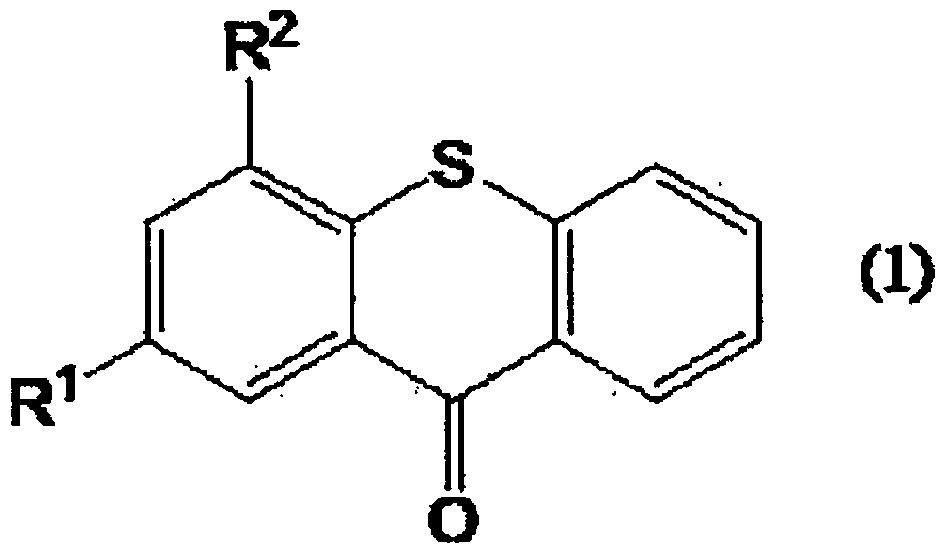Active energy ray curable adhesive composition, polarizing film and method for producing same, optical film and image display device
A technology of active energy rays and manufacturing methods, which is applied to the field of active energy ray-curable adhesive compositions, and can solve problems such as poor durability such as crack resistance, reduced transparency of an adhesive layer, and uneven polarizing film.
- Summary
- Abstract
- Description
- Claims
- Application Information
AI Technical Summary
Problems solved by technology
Method used
Image
Examples
Embodiment 1~9、 comparative example 1~2
[0247] According to the compounding table of Table 2, each component was mixed, and it stirred at 50 degreeC for 1 hour, and obtained the active energy ray-curable adhesive composition of Examples 1-9 and Comparative Examples 1-2. The numerical value in the table shows the weight% when the total amount of the composition is 100 weight %. It should be noted that in Example 4, if the total composition is converted to 100% by weight, the radically polymerizable compound (A) is 20.10% by weight, and the radically polymerizable compound (B) is 58.29% by weight. The radical polymerizable compound (C) is 20.10% by weight, and the photoradical polymerizable initiator (general formula (2)) is 1.51% by weight.
[0248] The compatibility of the adhesive composition was evaluated based on the following conditions. The ingredients used are as follows.
[0249] (1) Radical polymerizable compound (A)
[0250] HEAA (Hydroxyethyl acrylamide), SP value 29.6, Tg of homopolymer 123℃, manufactured by ...
Embodiment 10~24
[0303] According to the compounding table described in Table 3, the components were mixed and stirred at 50°C for 1 hour, and the active energy ray-curable adhesive compositions of Examples 10 to 24 were obtained by the same method as in Examples 1 to 9. The numerical value in the table shows the weight% when the total amount of the composition is 100 weight %. The adhesion, water resistance (warm water immersion test), and durability (thermal shock test) of the obtained polarizing films were evaluated under the same conditions as the above-mentioned measurement conditions. The adhesive strength (water resistance evaluation) after warm water immersion was measured under the following measurement conditions.
Embodiment 10A and 11A
[0305] Before the coating process, both sides of the polarizer (the side bonded with the transparent protective film) were corona treated, except that the same active energy ray curable adhesive composition as in Examples 10 and 11 was used to produce a polarizing film , The same evaluation as in Examples 10 and 11 was performed.
[0306]
[0307] Cut the polarizing film into a size of 200 mm in the direction parallel to the stretching direction of the polarizer and 15 mm in the orthogonal direction. Between the transparent protective film (acrylic resin film) and the polarizer, make a cut with a cutter, The polarizing film is attached to the glass plate. After immersing the polarizing film in warm water at 40°C for 2 hours, within 30 minutes after taking it out (in a non-dried state), use a Tensilon tensile tester to separate the protective film and the protective film in a 90-degree direction at a peeling speed of 300 mm / min. The polarizing plate was peeled, and the peel stren...
PUM
| Property | Measurement | Unit |
|---|---|---|
| glass transition temperature | aaaaa | aaaaa |
| wavelength | aaaaa | aaaaa |
| transmittivity | aaaaa | aaaaa |
Abstract
Description
Claims
Application Information
 Login to View More
Login to View More - R&D
- Intellectual Property
- Life Sciences
- Materials
- Tech Scout
- Unparalleled Data Quality
- Higher Quality Content
- 60% Fewer Hallucinations
Browse by: Latest US Patents, China's latest patents, Technical Efficacy Thesaurus, Application Domain, Technology Topic, Popular Technical Reports.
© 2025 PatSnap. All rights reserved.Legal|Privacy policy|Modern Slavery Act Transparency Statement|Sitemap|About US| Contact US: help@patsnap.com



